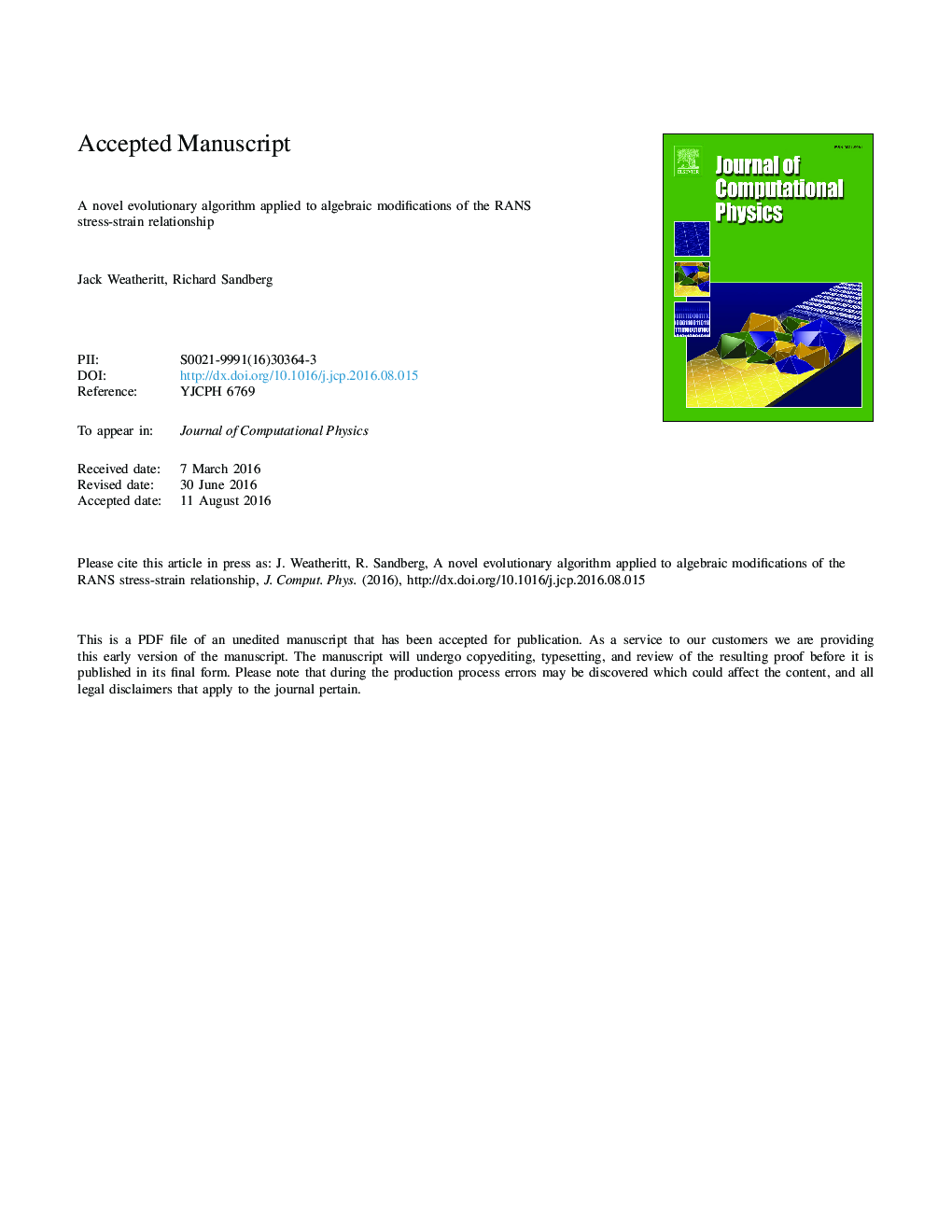| Article ID | Journal | Published Year | Pages | File Type |
|---|---|---|---|---|
| 4967995 | Journal of Computational Physics | 2016 | 33 Pages |
Abstract
This paper presents a novel and promising approach to turbulence model formulation, rather than putting forward a particular new model. Evolutionary computation has brought symbolic regression of scalar fields into the domain of algorithms and this paper describes a novel expansion of Gene Expression Programming for the purpose of tensor modeling. By utilizing high-fidelity data and uncertainty measures, mathematical models for tensors are created. The philosophy behind the framework is to give freedom to the algorithm to produce a constraint-free model; its own functional form that was not previously imposed. Turbulence modeling is the target application, specifically the improvement of separated flow prediction. Models are created by considering the anisotropy of the turbulent stress tensor and formulating non-linear constitutive stress-strain relationships. A previously unseen flow field is computed and compared to the baseline linear model and an established non-linear model of comparable complexity. The results are highly encouraging.
Related Topics
Physical Sciences and Engineering
Computer Science
Computer Science Applications
Authors
Jack Weatheritt, Richard Sandberg,
